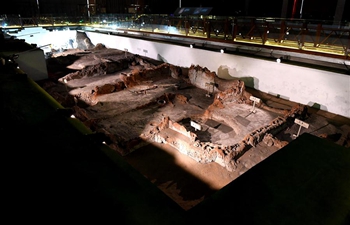SHIJIAZHUANG, Dec. 28 (Xinhua) -- Archaeologists in north China's Hebei Province have discovered a new Great Wall relic built during the Ming Dynasty (1368-1644) to guard against northern invaders.
The relic in the city of Wu'an features structures and designs similar to the 19 Great Wall sites found in the same area in 2007, suggesting that they belong to the same defense system, according to the city's cultural relics conservation bureau.
The limestone fortification winds for about 300 meters between two hilltops in the mountainous area, with altitudes between 1,592 and 1,625 meters, Jia Mingtian, an archaeologist with the bureau, told Xinhua.
Due to years of neglect, the central structure of the walls has seen serious damage, while the walls are relatively well preserved. Remains of draining holes and defense platforms have also been discovered at the site.
The Great Wall, a symbol of China, are many interconnected walls built between the third century B.C. and the Ming Dynasty. It was listed as a World Heritage Site by UNESCO in 1987.
Apart from those turned into tourist sites, many such relics are little-known, tucked away in remote mountains where they face the threat of natural erosion.

















